|
If your snake has stopped eating frozen thawed after being previously established on it, freezer burn may be the culprit. Lamprophid snakes tend to be a bit sensitive to freezer burnt prey. This is especially true for file snakes. I think this may be because they rely heavily on their sense of smell, and as prey oxidizes it changes in smell, texture, and even color. It may get to a point where the animal simply doesn't recognize it as food anymore. Anyone who's attempted to eat a freezer burnt steak can tell you the flavor is definitely affected as well. So it's not hard to understand why snakes may reject freezer burnt prey. So here's what you need to know about freezer burn in regards to prey items. Prey will become freezer burnt within 6 months, from the first day it was froze, which is not likely going to be when you bought or received it. Unfortunately, yes some pet stores and even online prey retailers will sell you prey that is already freezer burnt. So the length of time you've had it may not be a factor at all in determining if the prey is freezer burnt :( There are not always visible signs of freezer burn, but sometimes you can see spots develop as the prey oxidizes. Notice how the pinky on the far right has many oxidation spots and a slight yellow tint. This is common in advanced freezerburn, and many snakes are not likely eat mice that look like this.
Its not always that obvious though. Especially if the animal already has fur. Here's a way to check if your prey may be freezer burnt without any visible oxidation spots. First offer your snake a prekilled mouse, something freshly expired. If it eats that, then you know its not that it wants the movement of live prey. Then try another prekilled mouse, but this time freeze it the night before, and prepare it the same way you prepared the rejected frozen from before. If it takes that, then the odds are very good that the rejected prey may be freezerburnt. Here's some tips on how to avoid freezer burnt prey: Order your frozen thawed prey in quantities that would last 2 months at a time. This can reduce waste since you wont likely know how long they've already been frozen and stored for at the time that you purchase them. Package the prey with as little air as possible. Less air = less oxygen to oxidize the meat = less freezer burn. Set the freezer to 0 degrees. This is the optimal temperature for frozen meat, there is no need to go any colder, and doing so may even make the prey freezer burn faster. Is freezer burnt prey safe for my snake to eat? Yes it is. freezer burnt prey that doesn't have any other signs of spoilage, is still safe for your snake to eat. It's just far more likely to be rejected than prey that is more fresh.
0 Comments
Its easy to get a little confused by prey size labels in mice. If you're looking into buying a snake and the breeder tells you they're feeding on "pinkies" what exactly does that mean? If you google it you'll find that a pinky is a baby mouse that doesn't have any fur. That's a good enough explanation for larger snake species. However, it doesn't serve you well in house snakes, or other species that start out life very small because the size of a newborn "pinky" can be 8 times smaller in weight than a large "pinky". Here's a look at pinky mice sizes starting at newborn (or "redhots" as they are called here in Florida). Newborns are typically half a gram in weight to 1g. Small pinkies are about 1-2 gram. Medium are 2-2.5g. Large pinkies are 2.5-3.5 grams, Peach fuzzy are roughly 3.5-4.5 grams. Fuzzies are 4.5-6. This is the way that I personally organize my sizing however, and different rodent breeders may use different labels, or different gram weights to describe each of the same labels. Many prey sources will not have "pinkies" broke down into as many sizes as this either. For example, One prey source: Rodentpro.com breaks their sizing down like this: Laynelabs uses different labels- doesn't use the "peach fuzzy" label at all. Also uses different gram weights. Other sources may not use as many breakdowns at all. like AmericanRodent.com So if you walk into a pet store and order a "pinky" you could be given a prey item anywhere from half a gram to 4 grams. To make matters even more confusing, rodents can mature differently, especially across different breeders, so using a lack or presence of hair to label prey can get you different results. So if you're raising a very small snake, its best to compare gram weights when looking for prey source, not label names. For most species a few grams difference isn't going to be an issue, but in very small snakes it can be. Typically speaking, a 5 gram hatchling is not going to want to eat a 4 gram "pinky" no matter how it's presented. So if your hatchling was started on "newborn" pinkies. It is not reasonable to assume they would be willing to eat large pinkies. It is possible that they can, but they probably will not. Don't get me wrong, House snakes are capable of eating enormous prey relative to their body size, but that doesn't mean they will *want* to. especially as young hatchlings. I think its prudent to mention here that although size matters greatly to hatchlings that are feeding on their own, that doesn't mean you start them by force feeding them pinky heads or chopping the mice up, anything like that. I personally start all hatchling house snakes on whole live newborn mice, up to 2 grams in weight max, and they will stay on that size for the first couple months or longer depending on size at hatching. We start to switch them to frozen after their 4th meal. As they grow the size of prey begins to matter less and less, but very young hatchlings that haven't developed their confidence will need appropriately sized prey to be willing to eat on their own. So it does matter. I hope this helps to explain some of the confusion surrounding prey sizing with house snakes. If you have any questions, feel free to contact me. :) p.s.: I list some online prey sources here for illustrative purposes only. Their inclusion in this post is not sponsored by them, and is not in any way an endorsement of their products, Ok? ok.
Origins
I am always on the look out for rare or odd house snakes, and am privileged to have friends worldwide whom look out for them for me (as I look out for their interests here in the US) so when a Dutch friend of mine happened across 23 bright orange babies and an older male het, I was more than happy to take the call. I briefly spoke to the breeder (in broken Dutch- not my strongest language) in a video chat where I was shown the animals and it was arranged that I would pay my exporter for them and they could be sent with another shipment coming from South Africa that just so happened to be leaving Amsterdam in just 3 days. Just 11 days later they were here in the United States. Unfortunately because of the rush to make the export and the fast paced nature of the show, I wasn't able to get as much information on their background as I typically would like to have.
Genetics-Again this is a new project so these are just my observations so far.
It's obvious that these animals are not a typical albino, but when bred to others they are surprisingly compatible. I've done a couple crosses with them now and in every case the pairing results in babies that are brighter, more intensely colored, and with patterns that are consistently distorted, typically are either very stripey or granite speckled. In my cross to a Kzn Red Albino, I found the red was brought out immediately and rivals any other red type morph i'm currently working in. In a cross to my facemask project line it brings the white up crazy high on the sides. While it did retain some striping in each pairing so far, It only seems to retain its patternless pure white stripe when crossed to east london locality capes though. So I believe that just happens to come from that locality. So far it seems to effect both color and pattern to a degree no matter what I do with it though, so I look forward to continuing to explore it in future pairings. This question is asked frequently, "In many sectors of the hobby it is frowned upon or even considered "unethical" to breed hybrids. Should this attitude exist for house snake keepers?"
I think its important to keep in mind that house snake taxonomy is a mess (More on this in the popular "House Snake mess for dummies" Article). We know little about what constitutes a "pure" animal to know what constitutes an "impure" one to even explore the argument to a finality, but lets use the arguments that are common in other sectors of the hobby to explore the issue. "Hybrids that get loose from irresponsible owners then taint the purity of wild populations" Unless you actually live in the places these animals are native there is no risk that your "hybrid" animal will get loose and "taint" the purity of the wild strains like there is with say a specific locality of California kingsnake. So were safe there- a black house snake in africa will not be changed by yours here in the US. "If people breed hybrids we wont have any pure animals anymore eventually. " Black house snakes are still being exported in mass, with least concern status, so there isn't currently really a need to preserve the "purity" of every single one like there is with say blue tongue skinks where the native borders are closed, and what we have now may be all we'll ever have. So that argument also doesn't apply here like it would elsewhere either. "Hybrids are sickly mongrels that don't do as well as their pure counterparts..." All morphs of any animal are caused by mutation, so we have to ask ourselves where do we draw the line on this one in the first place? Is a wild caught "pure" albino cape with light sensitivity automatically healthier than a hypo green with no issues? Not in my experience. House snakes are still young in the trade, but so far I haven't come across a hybrid that lacks the health and vigor common amongst the different species. For me, that will need further exploration before Id be comfortable taking the stance that hybrids are unethical on the grounds of health. Ironically that would require more hybrids to be made in order to prove or disprove as well. I can say that some of the common morphs are hybrid crosses and most people aren't even aware of that, yet they live productive lives in captivity all the same. Butters/Illumo/hypo green are worthy examples. 4) "People are breeding hybrids because they don't want to have to buy/wait for/breed another pure animal. Then they dump the hatchlings. " I too think the why is important. Perhaps the most important is WHY? why does this person want to cross their animals? I've personally made several hybrid crosses and I can tell you it isn't that easy. This fact alone will weed out many of the people who will attempt hybrid pairings for the "lazy" or otherwise "less than ethical" reasons. It's a lot harder, so there's going to be a reason to endure to the point of success. For me its to understand the boundaries of their taxonomy. Many house snakes are currently *legally* lumped together (like black house snakes and togo stripes) as the same species even though it makes no sense. "Hybrid" pairings give us information to understand these animals both here in the US and in the wild. Others may want to explore their gene plasticity or create new morphs. Point is there are perfectly valid reasons to create hybrid house snakes, and anyone that's ever seen a butter (or one's price tag) can tell you they are not being "dumped" either. In my experience so far its been quite the opposite. I personally can not create enough of some of them to keep up with the demand for them. What about the localities?! Localities with visual differences are technically not (always) *hybrids* of two species, so not exactly the same argument. They are usually two animals of the same species collected from different places (hence the term locality). I do agree that localities should be preserved to the best of our ability (I go over that pretty in depth in my Red Kenya vs Kzn Red post if anyone is interested). I do find it unethical to claim an animal is anything its not, and especially would not label an animal as "x,y, or z" locality if you don't actually know that, because that does have the capacity to change the "purity" of that locality in captivity here over time. Even that hang up is avoid by just being honest though. There's also the very valid argument to be made that even the localities that we do "breed pure" will not stay the same as those in the wild over time, since we will be selectively breeding those towards the traits we breeders like, resulting in differences over a long enough scale of time. But again that's another subject than strictly *hybrids*. So we should just take peoples word? Some will say that you shouldn't expect people to be honest and sure that's true, but you certainly can say that about every aspect of life- that's not new here. The best thing to do is to research the traits of the morph, specie, or locality your interested in and of course research the breeder you intend to buy from. Long story short if you honestly represent the animals you have made as hybrids, so that everyone knows exactly what they are getting, I just don't see the kind of reasons to devalue or snub hybrid house snakes like there is in other types of animals in the hobby. Lastly, It is ok to agree to disagree. Hybrids aren't for everyone. Some people don't like the idea of animals having any type of mutation at all. That's ok! You can like hybrids or not. You can like mutations "morphs" or not. One of the best features of this hobby is that were all a little misfit in the first place, so there's no reason we cant respect each others differences. :) Many striped fuliginosis are mistakenly sold in the United States as Boaedon Lineatus. One common reason may be because they are being imported from benin and togo alongside black house snakes, and they currently share the same scientific name but dont look anything like each other. This may confuse importers who then go looking for a scientific name that they think fits better. So the striped fuliginosis gets labeled a lineatus by well meaning importers and then sold us such. So how do you tell which your snake actually is? This video will show you how. KZN Red and Red Kenya- the two red house snakes. What's the difference?
Kzn Reds start out somewhat brownish and gain their red color as they age. They also have a darker base to their color, and that color is typically fairly cool toned. Think " deep ruby". Kzn Reds certainly can have a warm tone too however it seems to be consistently less common. They typically have a faint speckled appearance that is nearly patternless, with eye stripes that parallel to another line nearing the neck, similar to other capes, but that line quickly disappears down the body. When bred to other capes, the first generation of offspring are similar to the pure kzn parents, but with a stronger amount of pattern more typical of non-locality specific capes. In my projects ive noticed this continues to look closer and closer to a standard cape the further the genetics drift from the origin source.
M2 has the faded pattern and eye stripes of a kzn red but slight black rings and the warmer tone of red kenyas M3 has faint black eye rings, solid eyes, and eye stripes that are closer together like the red kenya but with some parallel striping and pattern fading into the body like the KZN red does. Based on these and the rest of the clutch I feel its safe to say that these two localities are fairly compatible despite their taxonomic differences (kzn red are a capensis and red kenya are fuliginosis). At the time of breeding them it was my hope to 1) see how the traits combine to further understand their differences and 2) be born with and continue to develop in time a nice deep red color. Time will tell :) Red by Cape CrossesCape crosses tend to take after their cape parents in most house snake pairings and it is no different in Reds. Both of the following animals have Kzn Red Blood. The first (stretched out) was produced by breeding a pure kzn red to an Albino cape. Note the high amount of pattern present when compared the the pure kzn red hatchling pictured next. In the next pictures a Red Kenya was bred to a Cape Albino then those babies were bred back to siblings. Ive noticed the base color of the red retains its warmer color and the eyestripes still are a touch yellow and touch at the nose on these pairings. Albino RedsEven in their second and third generation I find differences. In RK albino I notice a fair amount less pattern the higher the blood concentration is RK. In KZN Reds I find you can push the red in the pattern higher, but not the base, resulting in higher contrast hatchlings. Naturally, I'm always thinking of new ideas and ways to make even more stunning babies. There isnt many morphs of these yet but I will be updating with pictures of morph babies of both as I create them. Feel free to share your experiences as well!
|









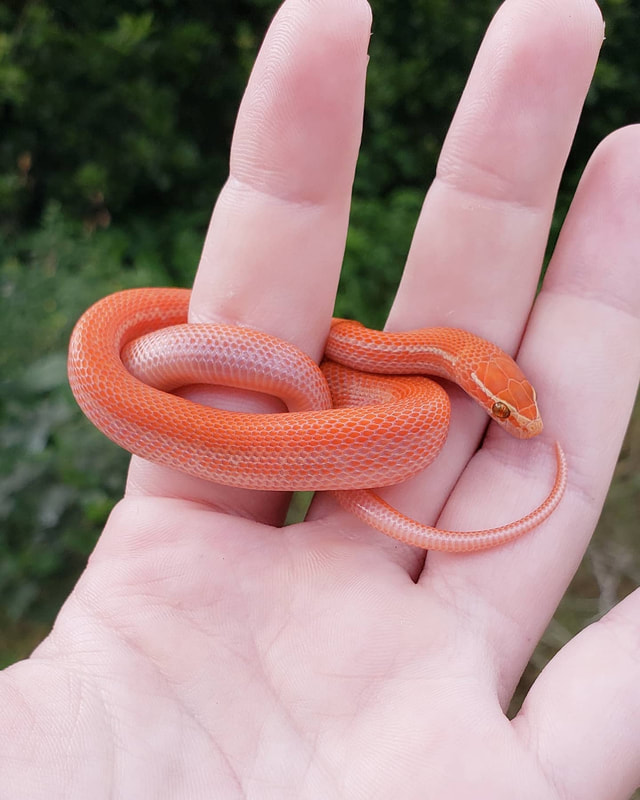
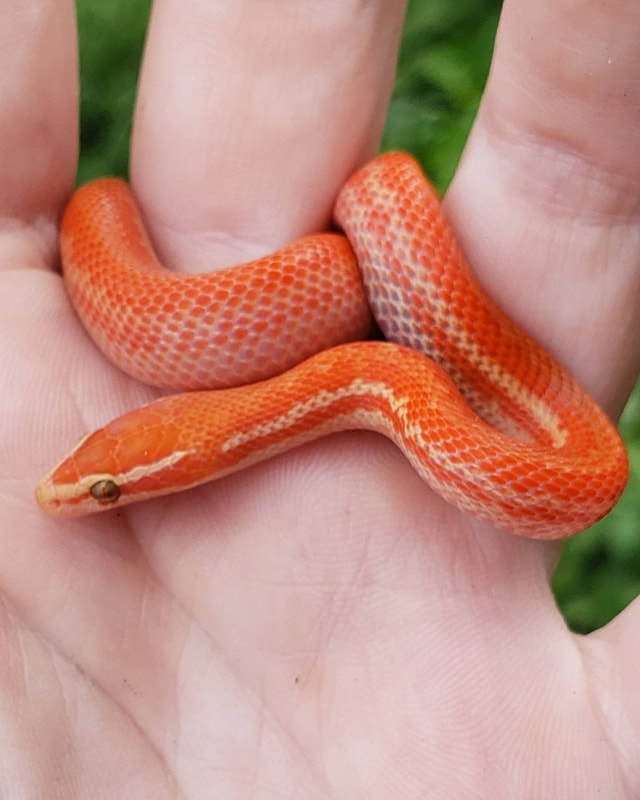
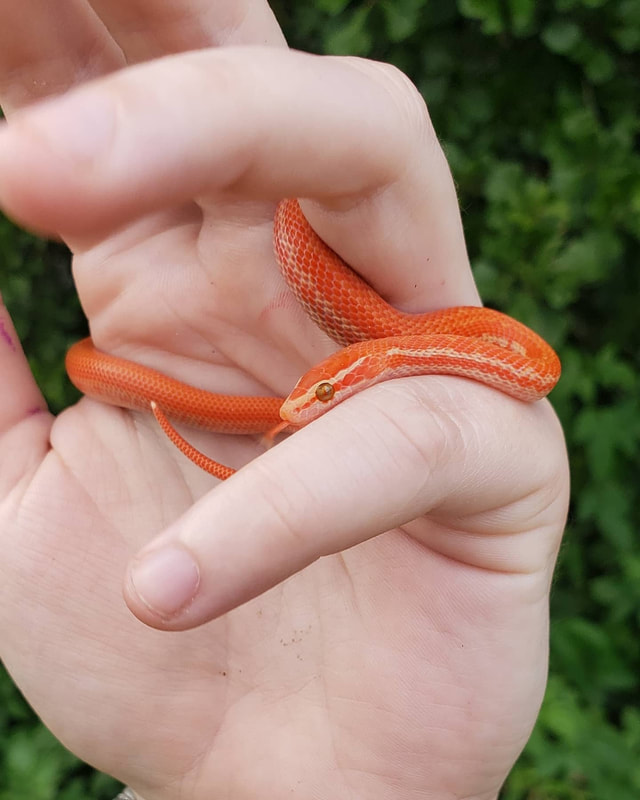
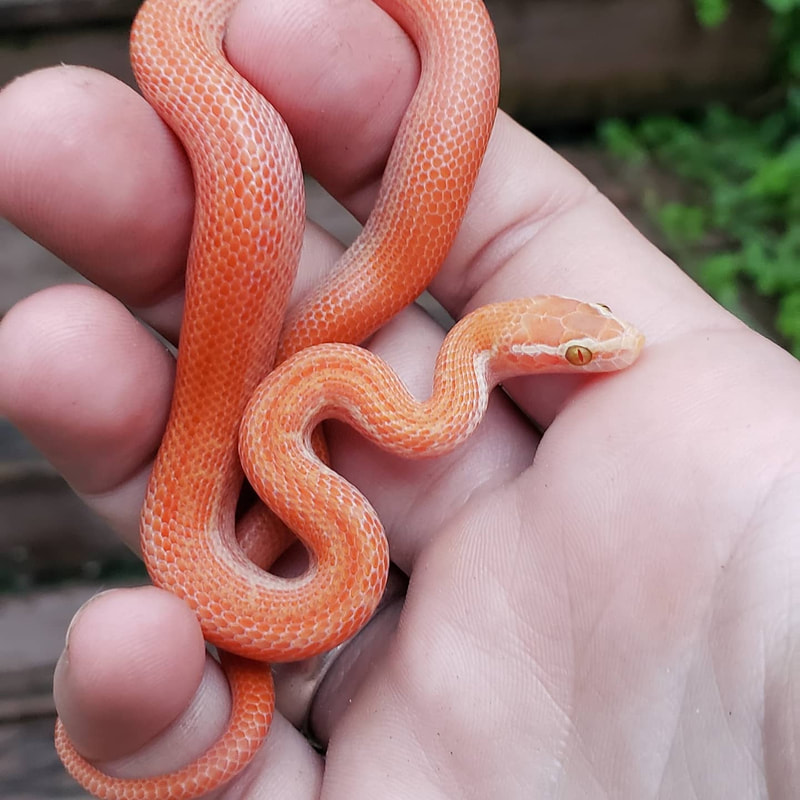
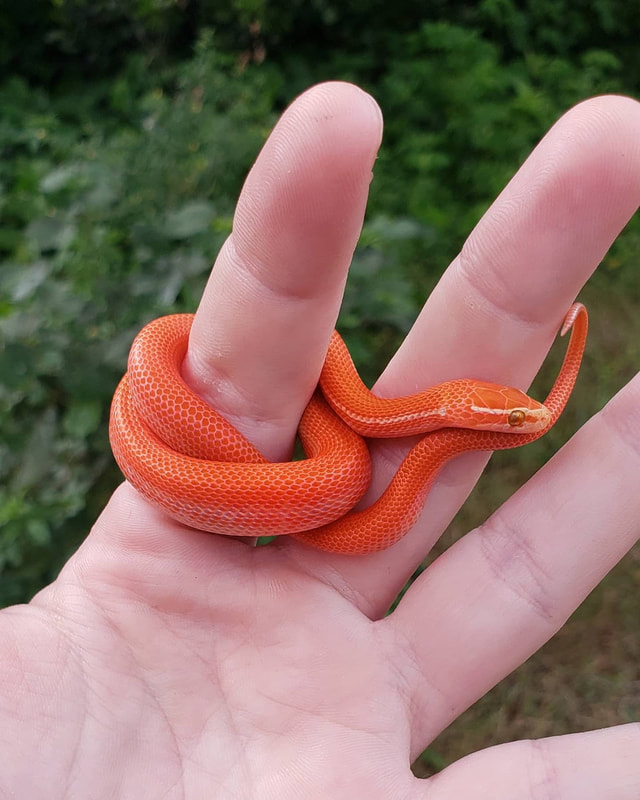
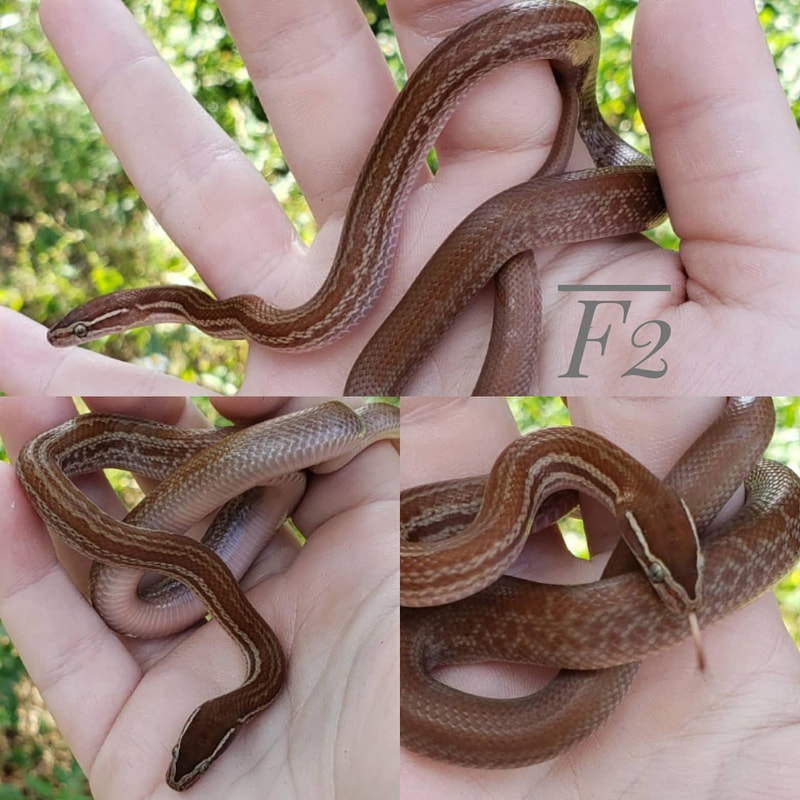
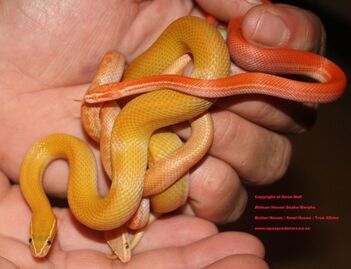
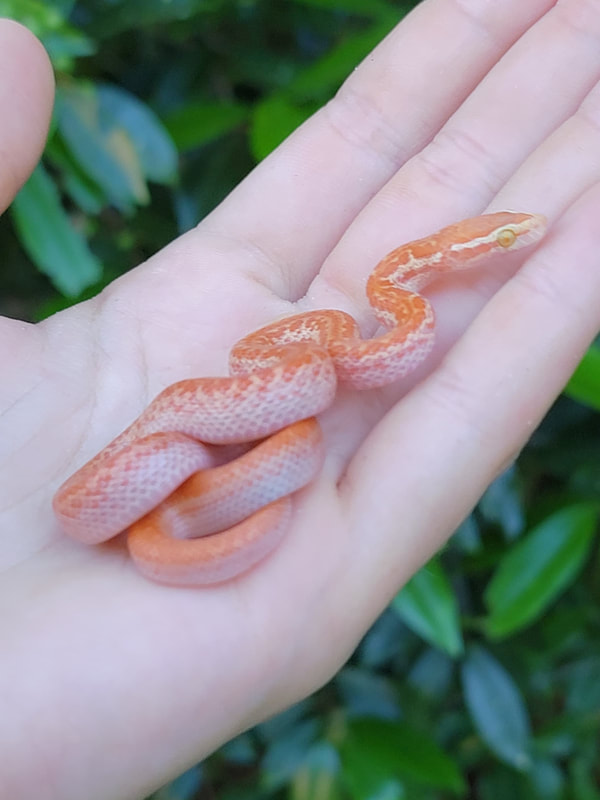
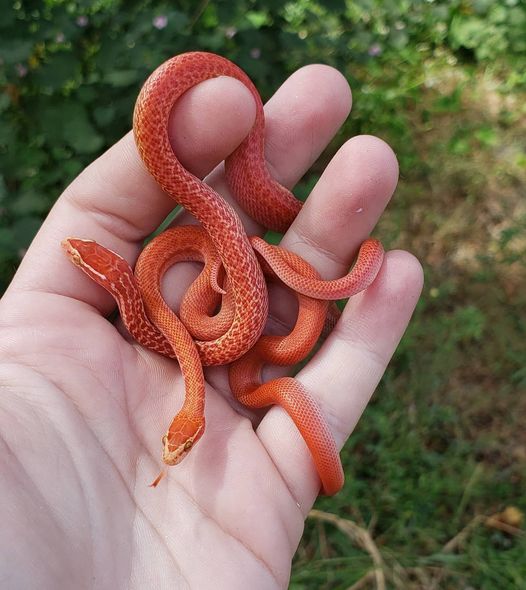
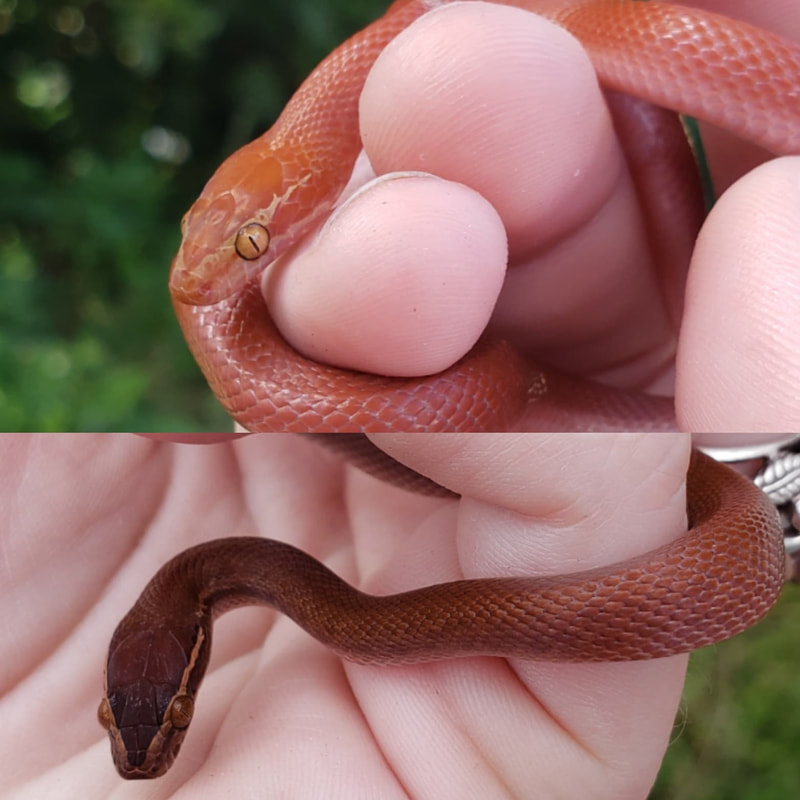
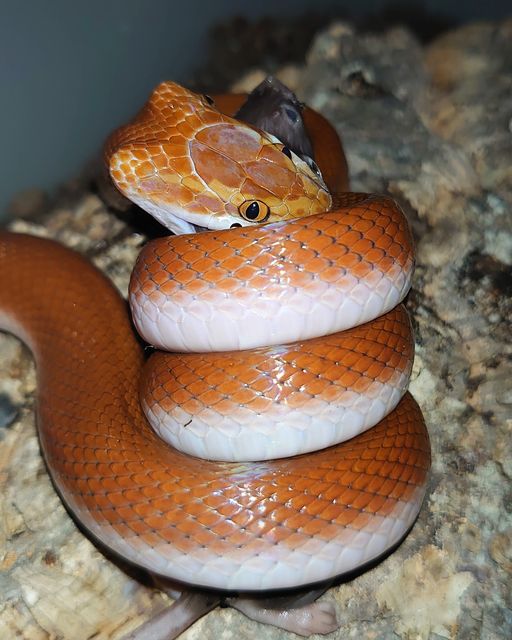
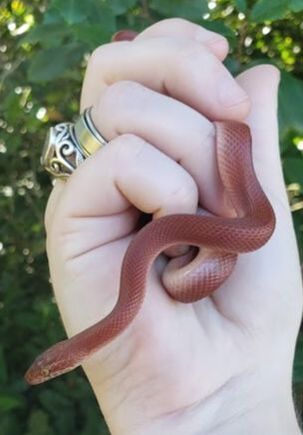
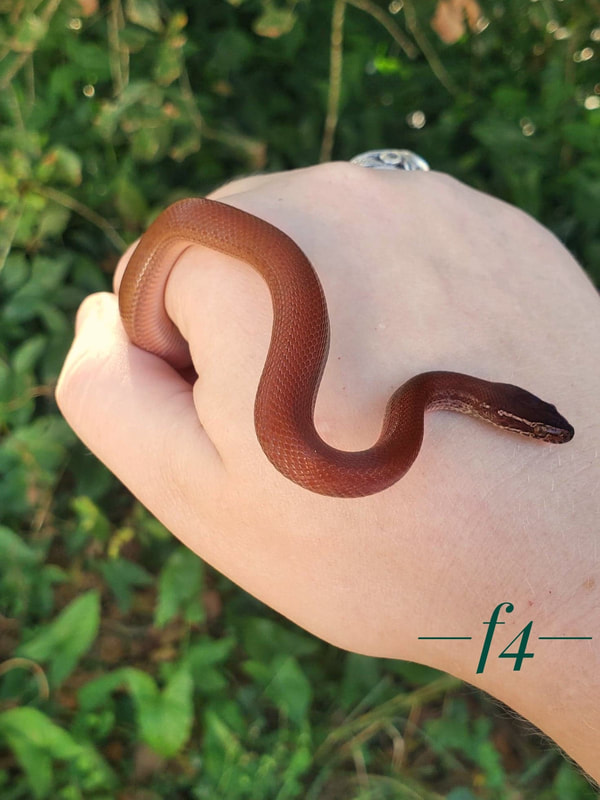
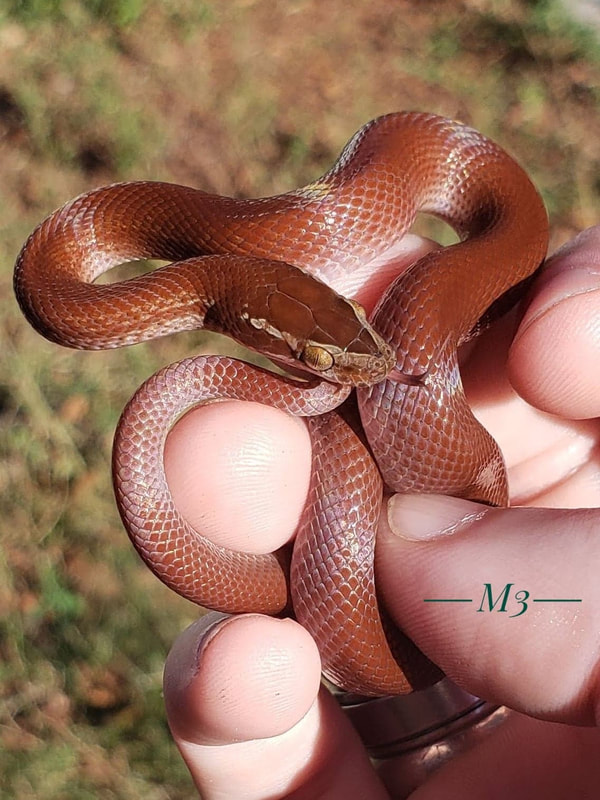
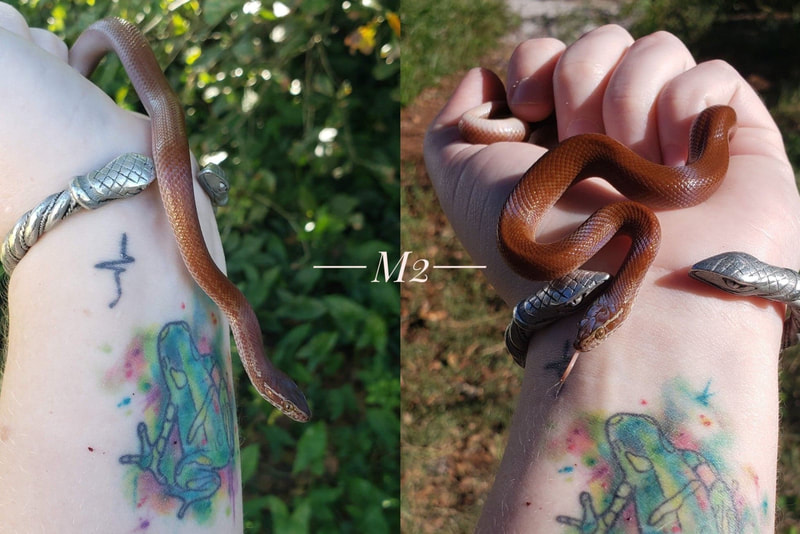
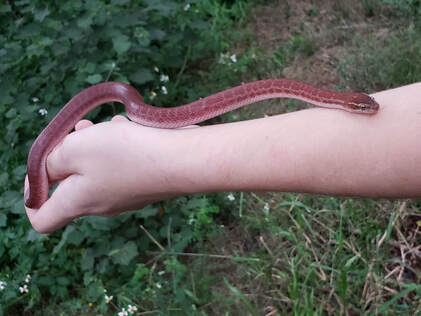
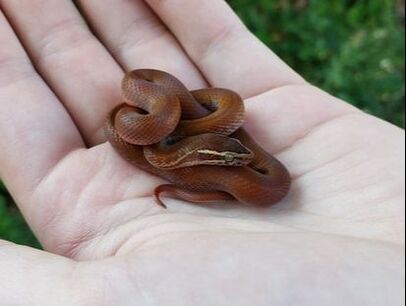
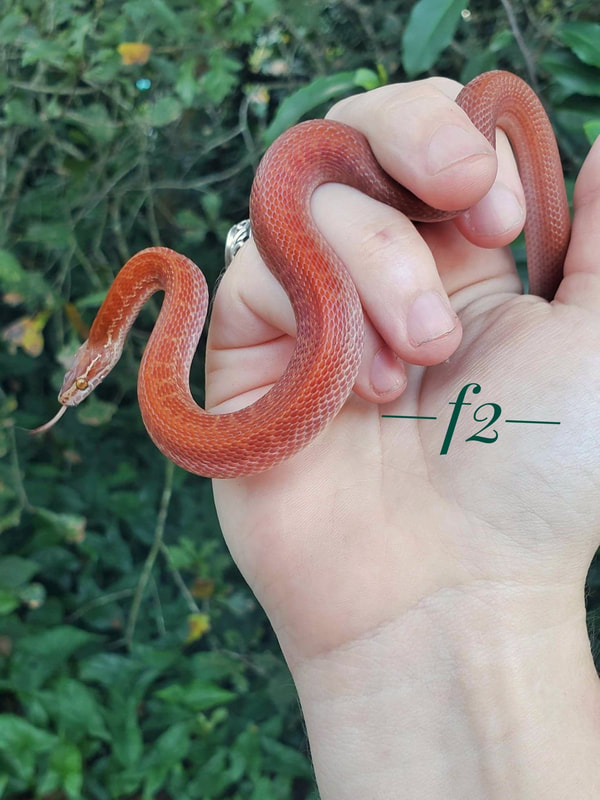
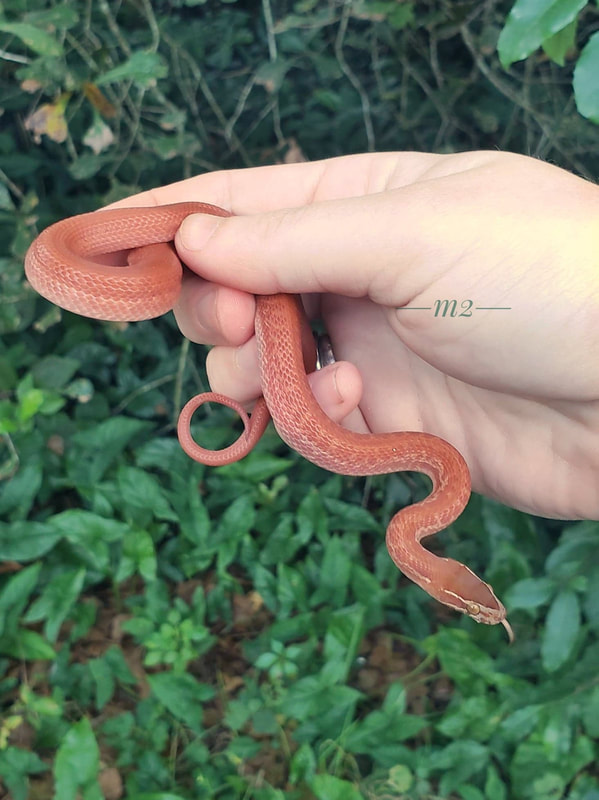
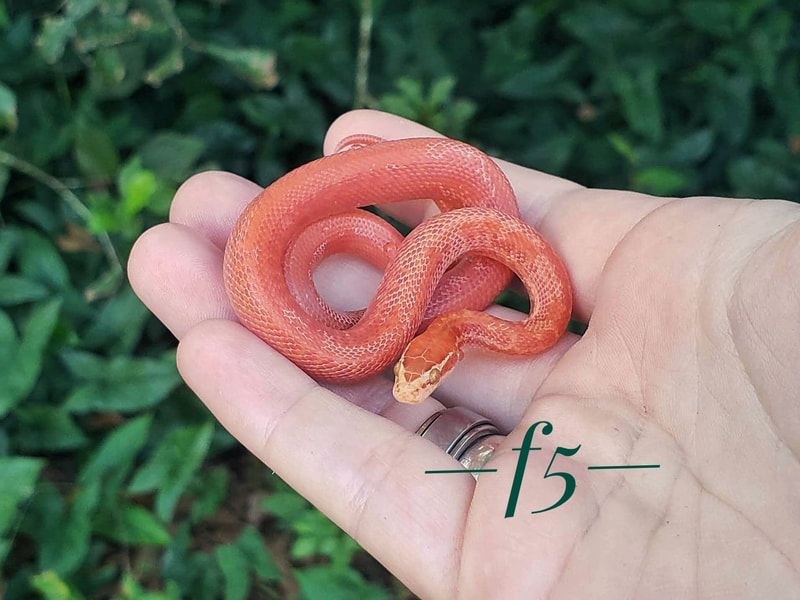
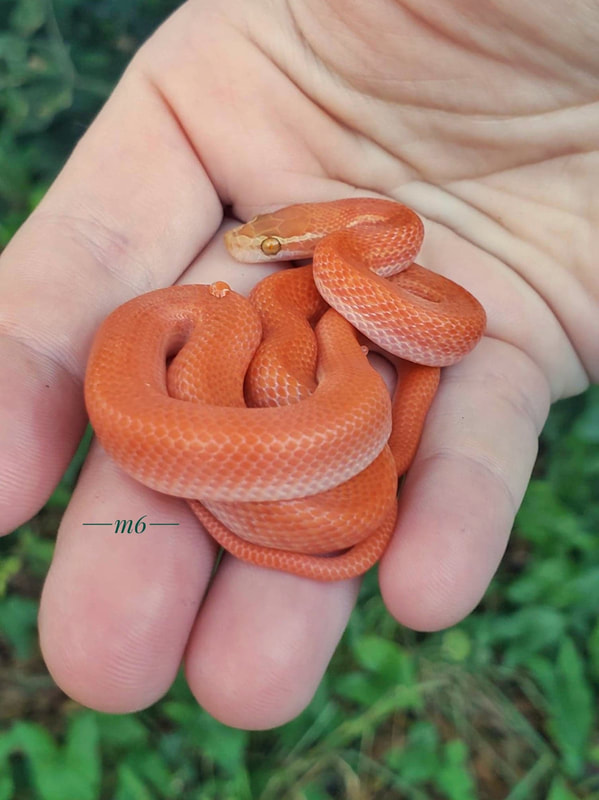
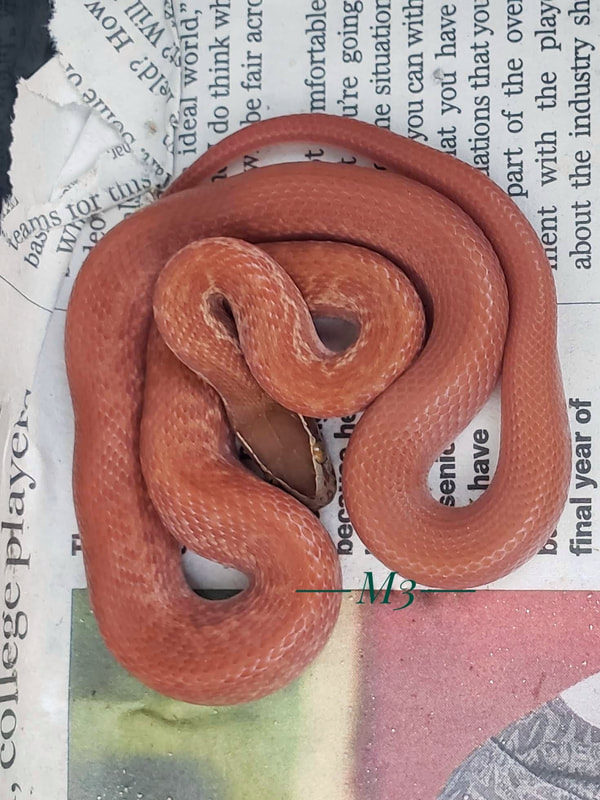
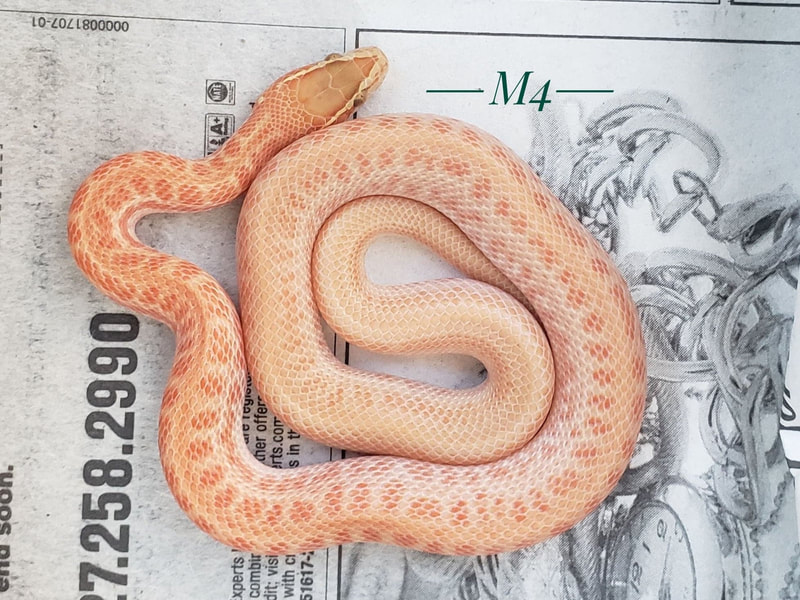

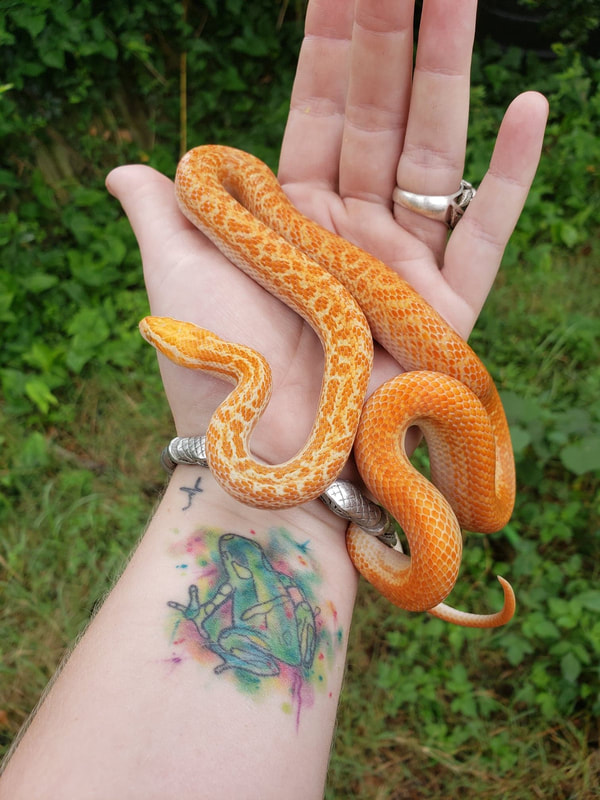
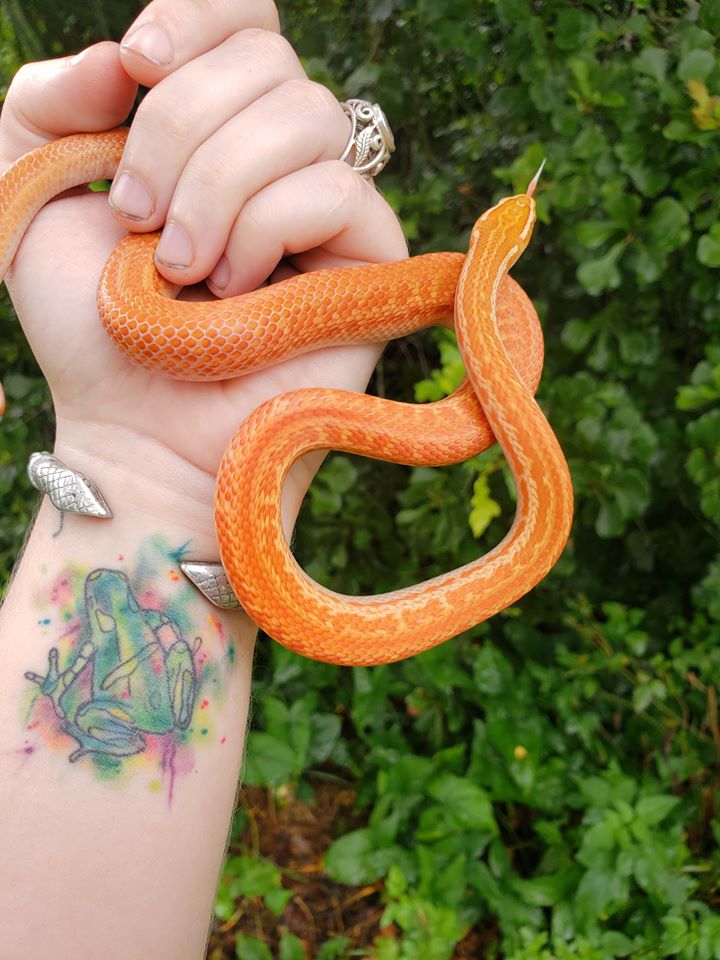
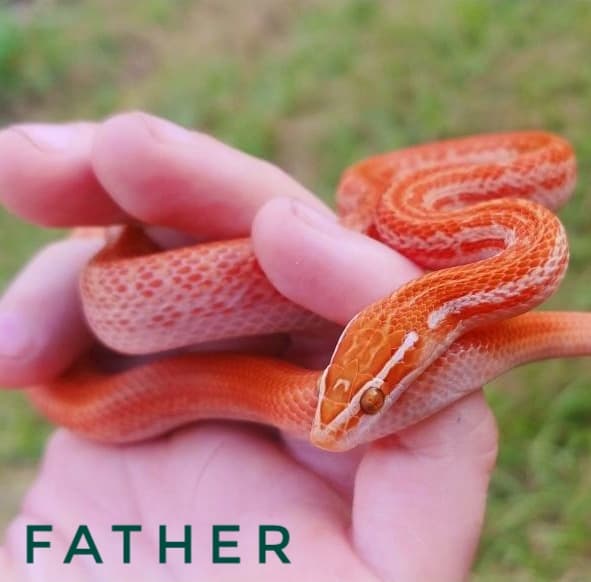
 RSS Feed
RSS Feed